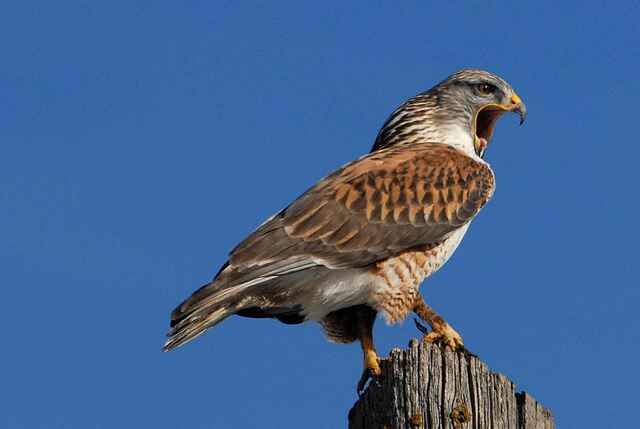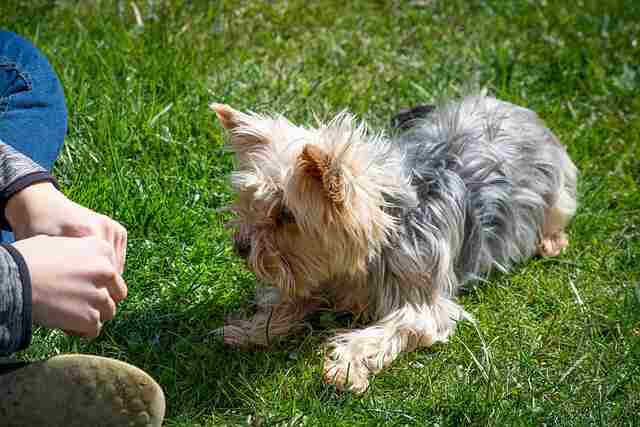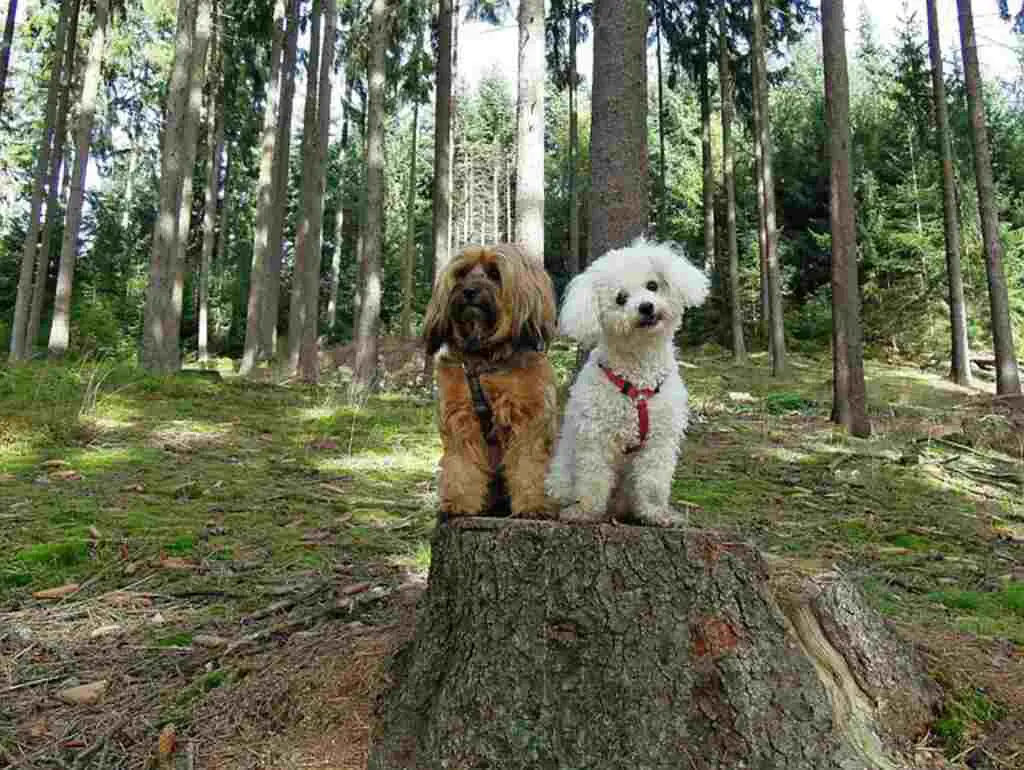Hawks are known to prey on small animals, including small dogs. To keep your pet safe from these opportunistic predators, it’s essential to know how to protect them. This guide, “How to Protect Small Dogs from Hawks,” provides practical and effective strategies for safeguarding your small dog from hawks.
How to Protect Small Dogs from Hawks?
I. Introduction
A. Explanation of the problem of hawks preying on small dogs
Hawks are natural predators that can pose a danger to small dogs, especially those that are left outside unsupervised. Hawks have keen eyesight and can spot small dogs from a distance, making them vulnerable to attacks.
B. Purpose of the blog post
The purpose of this blog post is to provide pet owners with information and tips on how to protect their small dogs from hawks, including understanding hawk behavior, training dogs to recognize and respond to hawks, and using visual deterrents.
Additionally, the post will also cover what to do if a small dog is attacked by a hawk and how to provide first aid for injuries.
C. Can a hawk pickup a small dog?
According to learnbirdwatching.com, a hawk can pick up a small dog, depending on the size of the hawk and how hungry it is. Hawks are carnivores, so if they see prey that appears to be edible, they will try to consume it no matter what size or type of animal it is.
In some cases, an exceptionally large hawk has been reported to take down even midsized dogs, weighing as much as 10 pounds or more.
However, this is rarer than you think, since smaller hawks that weigh less than five pounds are not strong enough or have talons long enough to pick up even the smallest of dogs.

II. Understanding Hawks
A. Types of hawks, commonly found in residential areas
Some of the most common types of hawks found in residential areas include the Red-tailed Hawk, Cooper’s Hawk, and Sharp-shinned Hawk. These birds of prey can have similar features, such as sharp talons, hooked beaks and good eyesight, but they have different size and hunting methods.
B. Behavior and hunting patterns of hawks
Hawks are opportunistic hunters and will prey on small animals such as rodents, rabbits, and squirrels, but they can also target small dogs if they are left unsupervised.
Hawks typically hunt during the day and use their sharp talons to grab their prey. They may also use their beak to strike their prey before carrying it off.
C. Migratory patterns and seasonal dangers
Hawks migrate seasonally, which means they move from one place to another depending on the weather and food availability.
During migration season, there might be a higher concentration of hawks in certain areas, which increases the risk of attacks on small dogs.
It’s also important to note that during breeding season, Hawks may become more aggressive in defending their nest and territory, so it’s best to be extra cautious during these times.

III. Protecting Your Small Dog
A. Tips for keeping your dog safe while outside
1. Leashing and supervising your dog
One of the best ways to protect your small dog from hawks is to keep them on a leash while they are outside. This ensures that they are always within your line of sight and can be quickly brought to safety if a hawk is spotted.
2. Keeping your dog in a fenced-in area
Another option is to keep your small dog in a fenced-in area while they are outside. This can provide an additional layer of protection, as hawks may be less likely to approach a fenced area.
3. Avoiding wooded areas during peak hunting times
Hawks are most active during the day, so it’s best to avoid walking your dog in wooded areas or near open fields during peak hunting times, which are typically early morning and late afternoon.
Additionally, creating a covered area for the dog to rest and play in, like a dog house or a pen with a roof, will provide them with a safe space where they can escape from hawks.

B. Training your dog to recognize and respond to hawks
1. Using a whistle or other noise to startle a hawk
Teaching your dog to associate a loud noise, such as a whistle, with the presence of a hawk can help them to recognize and respond to the bird’s presence.
This can be done by blowing the whistle and immediately rewarding your dog with a treat when they look at the sky or in the direction of the noise.
2. Teaching your dog to come when called
Teaching your dog to come when called is an important safety measure that can be used to protect them from hawks. By having a reliable “come” command, you can quickly call your dog to safety if a hawk is spotted nearby.
It’s important to practice this command frequently in different environments and reward your dog for responding promptly and correctly.

C. Using visual deterrents
1. Installing bird netting or other barriers
Installing bird netting or other physical barriers around your yard or outdoor areas can help to keep hawks away from your small dog. This can be especially useful if you have a fenced-in area where your dog spends a lot of time.
2. Using reflective or brightly colored materials
Another option is to use visual deterrents such as reflective or brightly colored materials to make your small dog less visible to hawks.
This can include attaching brightly colored ribbons to your dog’s collar or harness, or using reflective tape on their leash or clothing.
It’s important to remember that this method is not foolproof and hawks may still attack, but it can be used as an additional layer of protection.

IV. What to Do if Your Dog is Attacked
A. First aid for injuries
If your small dog is attacked by a hawk, it’s important to act quickly to provide first aid for any injuries they may have sustained. This can include cleaning and dressing wounds, applying pressure to stop bleeding, and keeping your dog warm.
It’s important to note that even if the injuries seem minor, it’s still essential to seek veterinary care as soon as possible, as hawks can carry diseases.
B. Seeking veterinary care
Once you have provided first aid, you should seek immediate veterinary care for your small dog. A veterinarian will be able to assess the extent of the injuries and provide any necessary treatment such as antibiotics, pain medication, or surgery.
It’s also important to monitor your dog for any signs of infection or complications in the days following the attack.
C. Reporting the incident to local authorities
Reporting the incident to the local authorities can help to raise awareness of the danger of hawks preying on small dogs and may lead to increased measures being taken to protect pets in the area. You can report the attack to your local animal control or wildlife agency.

V. Conclusion
A. Summary of key takeaways
The main takeaways from this blog post include understanding the types of hawks commonly found in residential areas, their behavior and hunting patterns, and the importance of protecting small dogs from hawks.
Additionally, the post provided tips for keeping your dog safe while outside, training your dog to recognize and respond to hawks, and using visual deterrents. It also covered what to do if your dog is attacked and how to provide first aid for injuries and seek veterinary care.
B. Additional resources for further information
For more information on protecting small dogs from hawks, pet owners can consult with local animal control or wildlife agencies, as well as veterinary clinics and pet stores.
Online resources such as pet forums, blogs and pet-related websites can also provide additional information and advice.
C. Encouragement to take action to protect small dogs from hawks.
It’s important for pet owners to take action to protect their small dogs from hawks, as these birds of prey can pose a serious threat.
By understanding hawks and taking the necessary precautions, pet owners can help to keep their small dogs safe and enjoy their time outside.
Related Post: Are Small Dogs Easier to Take Care of? Uncover the Truth!
Reference: https://learnbirdwatching.com/can-a-hawk-pick-up-a-dog/


